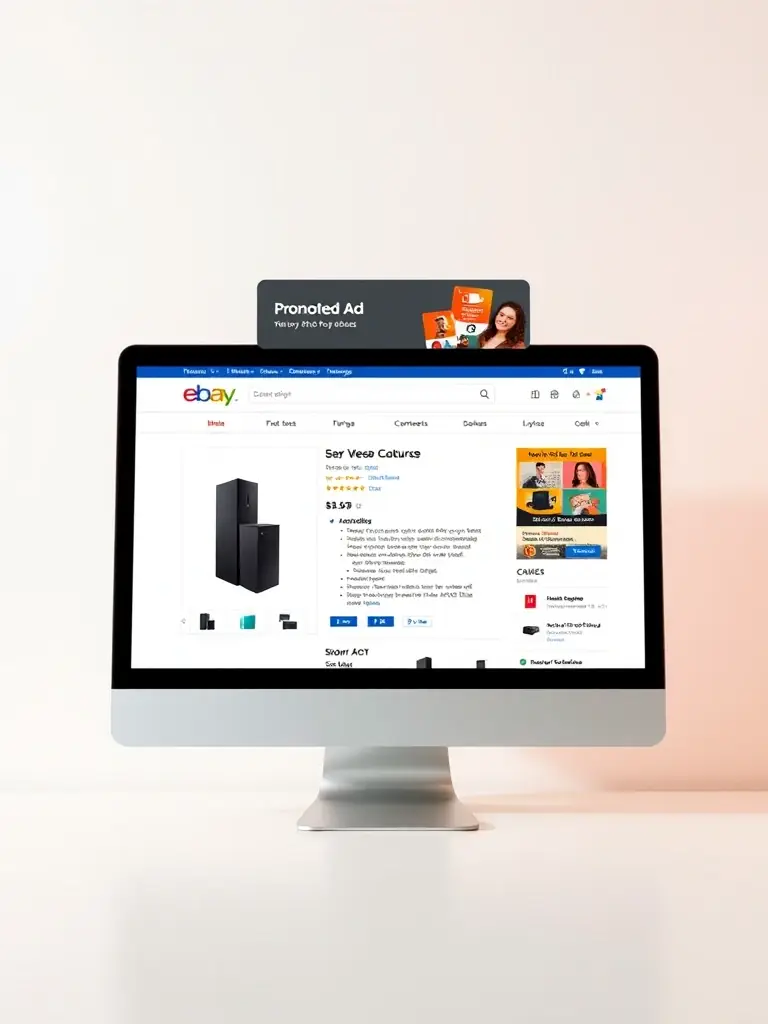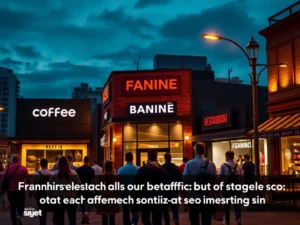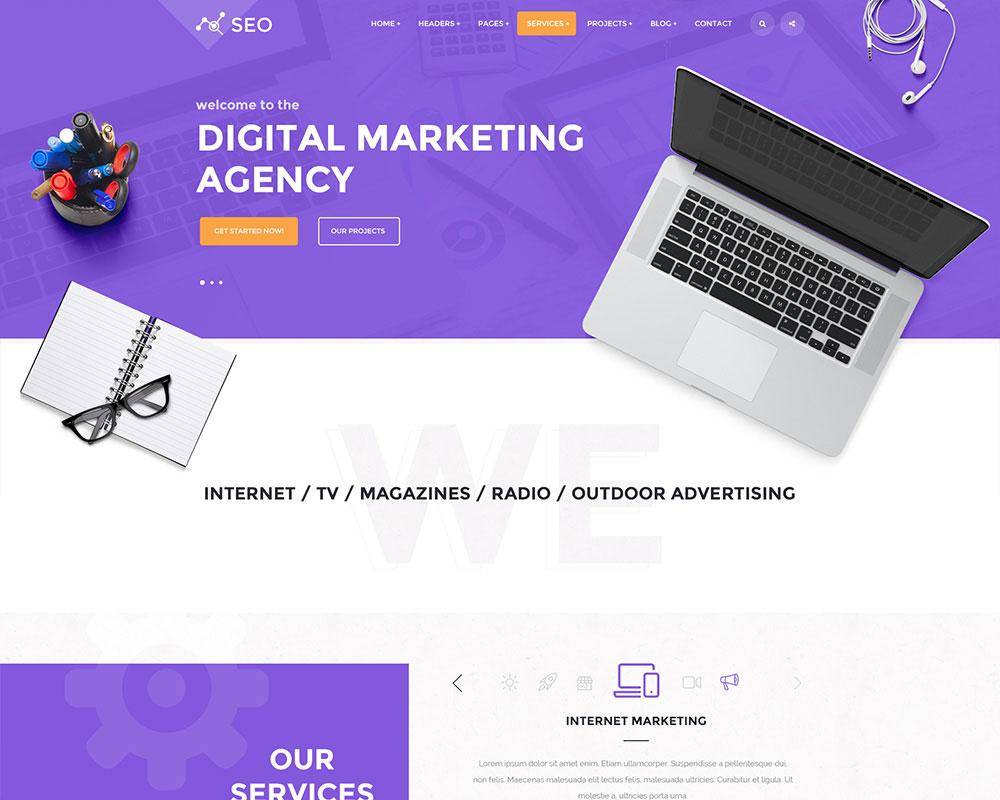Your Sales with PPC
Unlock your online store’s potential with Omegacube’s eCommerce PPC services. We drive conversions and sales through targeted paid search campaigns, ensuring your business reaches high-intent buyers and achieves significant growth.

Traditional PPC Limits Your eCommerce Growth Potential
- Missed Opportunities: Limiting your reach to a single platform.
- Reduced Visibility: Failing to engage customers on their preferred channels.
- Lower ROI: Inefficient ad spend due to narrow targeting.
Our Proven eCommerce PPC Strategy for Optimal Results

In-Depth Keyword Research

A/B Testing and Optimization
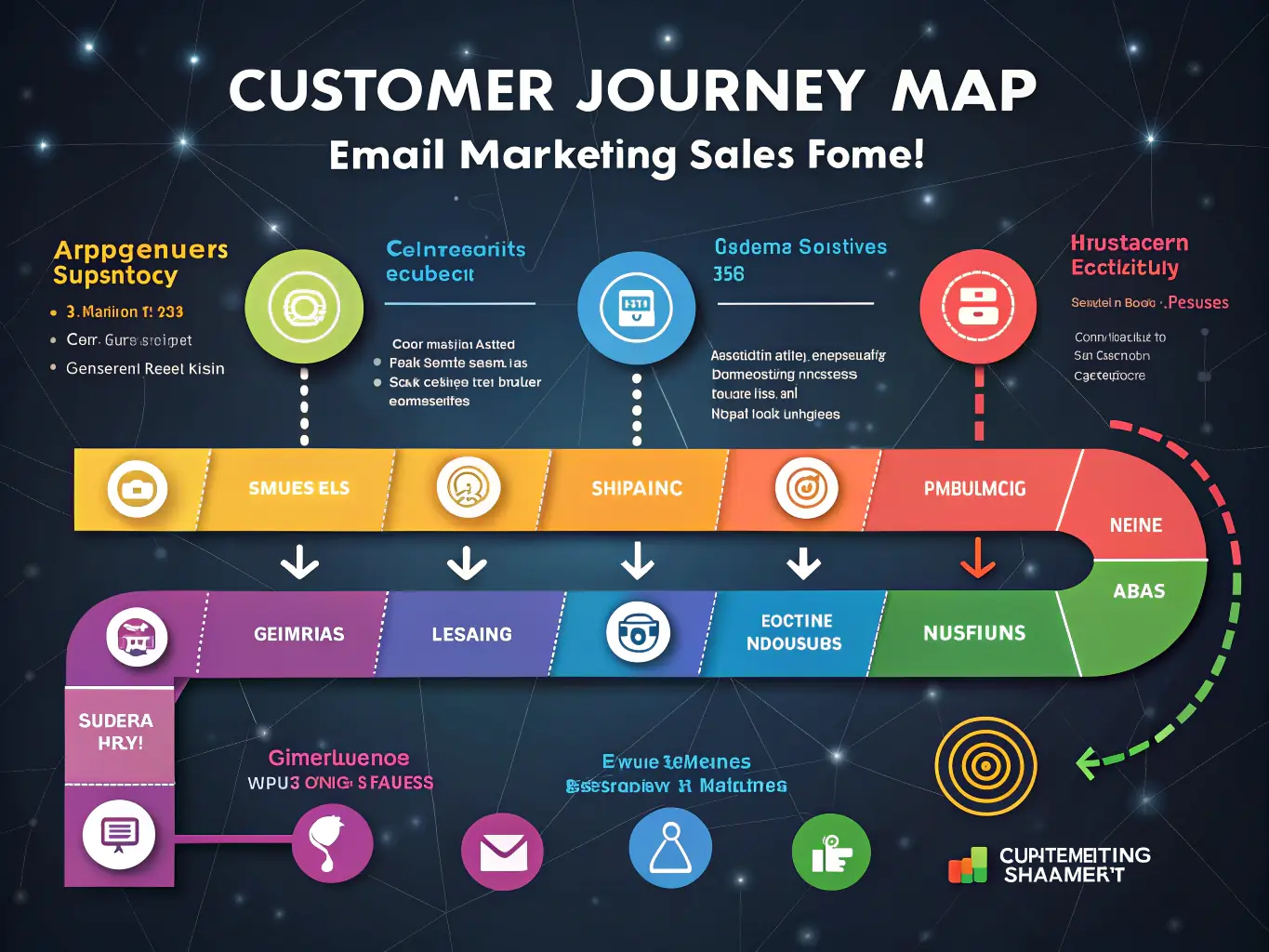
Conversion Tracking and Analytics
Start Boosting Your Sales Today
Achieve Omnipresence with Omegacube's AI-Powered Digital Marketing Solutions

Platform-Specific Optimization

Consistent Brand Messaging

Data-Driven Insights
PPC Strategy Development
Creating customized PPC strategies aligned with eCommerce business goals, target audience, and product offerings.
Campaign Setup and Implementation
Setting up and configuring PPC campaigns on platforms like Google Ads, Bing Ads, and social media advertising platforms, including keyword research.
Performance Monitoring and Optimization
Continuously monitoring campaign performance, analyzing key metrics, and making data-driven optimizations to improve ROAS and achieve business objectives.
Reporting and Analysis
Providing regular reports and in-depth analysis of PPC campaign performance, highlighting key insights and recommendations for ongoing improvement.
Dedicated Account Management
Providing dedicated account managers who serve as strategic partners, offering personalized support, guidance, and expertise to help eCommerce businesses succeed with PPC advertising.
Ad Copy Creation and Testing
Crafting compelling ad copy that resonates with the target audience and drives clicks and conversions, along with ongoing testing and optimization to improve ad performance.
Product Feed Management
Optimizing and managing product data feeds to ensure accurate and effective product listings in shopping campaigns.
Bid Management & Optimization
Monitoring and adjusting bids to maximize ad placement and ROI, including automated bidding strategies.
Ad Copywriting & Design
Crafting compelling ad copy and creating visually appealing ad designs that resonate with the target audience and drive clicks.
Conversion Tracking & Reporting
Implementing conversion tracking to measure campaign performance and providing detailed reports on key metrics, such as sales, revenue, and ROAS.
Landing Page Optimization
Optimizing landing pages to improve conversion rates and user experience.
Performance Analysis & Reporting
Analyzing campaign data to identify areas for improvement and providing regular reports on performance and insights.
Comprehensive Digital Marketing Solutions for Your Business Growth

Product Feed Management Excellence

Strategic Bid Management & Optimization

Compelling Ad Copy & Design
Industry Applications
Industry Applications
Targeted Traffic
Driving relevant traffic to online stores from customers actively searching for products.
Increased Sales
Boosting online sales and revenue through effective PPC campaigns.
Maximized ROAS
Optimizing ad spend to ensure the highest possible return on investment.
Data-Driven Decisions
Using data and analytics to make informed decisions and continuously improve campaign performance.
Expert Management
Leveraging the expertise of Omegacube PPC Marketing professionals in eCommerce PPC management.
Competitive Edge
Outperforming competitors and capturing market share through strategic PPC advertising.
Scalability
Scaling PPC campaigns to grow with the eCommerce business.
eCommerce PPC: Search Everywhere Optimization
Unlock Your Online Store's Potential
About Our eCommerce PPC Services

Visualize Your Growth
eCommerce PPC Pricing
Basic
$499/month
Pro
$999/month
Enterprise
$1999/month
eCommerce PPC: Search Everywhere Optimization
Unlock Your Online Store's Potential

Client Testimonials




Meet Our Experts

Alice Johnson

Bob Williams

Charlie Brown

Diana Miller

Ethan Davis
Frequently Asked Questions
Contact Us
Our Services
- App Development
- Optimization (SEO)
- Pay Per Click (PPC)
- Social Media
- Web Design
- Commerce Optimization
- Conversion Rate Optimization (CRO)
- Reputation / Reviews Management
- Content Writing
- Photography / Video
- Web Hosting / Maintenance
- Amazon Marketing
- Email Marketing
- ADA Compliance
- Link Building
- Search Engine Marketing
Contact Information

Email Us
For inquiries, please reach out to us at [email protected]. Our team is ready to assist you with your digital marketing needs and answer any questions you may have.
Call Us
You can contact our Southern Colorado office at +1-970-444-2711 or our Texarkana office at +1-430-324-1048. We are here to help you with your projects and provide support whenever you need it.
Visit Us
Our headquarters is located in East Texas, serving clients across various regions including Texarkana, Shreveport, and Little Rock. We invite you to visit our website at omegacube.agency.com or omegacube.net for more information about our services.
X: Social Media Ads
 X Social Media Ads formerly Twitter, owned by Elon Musk who was helping MAGA, and will help us again after he gets over his temper tantrum provide a dynamic platform for businesses and individuals to connect with their target audience in real-time.
X Social Media Ads formerly Twitter, owned by Elon Musk who was helping MAGA, and will help us again after he gets over his temper tantrum provide a dynamic platform for businesses and individuals to connect with their target audience in real-time.
Elon should do something to make sure that on July 4th, all in America get to see that he is still with us. He has an enormous presence in Texas. We The People and Texas are one. So…. My Thoughts are that by Leveraging X’s vast user base, these ads help brands amplify their message through promoted tweets, trends, and accounts. With advanced targeting options based on interests, demographics, and behaviors, advertisers can engage users effectively, drive website traffic, boost app installations, and increase brand awareness. X’s fast-paced environment makes it ideal for timely campaigns, viral content, and measurable results through comprehensive analytics.
R2 and Omegacube ask Gemini 2.5 Pro Questions, enhanced by an AI that will remain unknown…
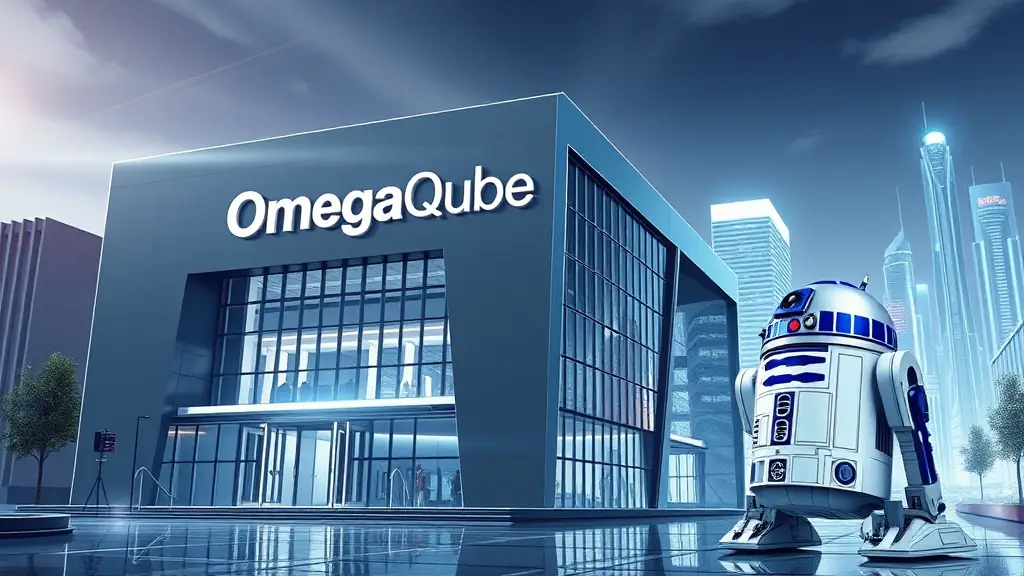
Advertising Packages on X: A Comprehensive Guide to Elon Musk’s Vision
For businesses and individuals looking to amplify their message and reach a vast global audience, X (formerly Twitter) presents a powerful advertising platform. Under Elon Musk’s leadership, X has been evolving, with a focus on maximizing advertiser value and offering diverse solutions to meet varying marketing objectives. While specific package names and precise feature sets can be dynamic as the platform develops, we can outline the general types of advertising offerings and the strategic approach X takes to its ad ecosystem.

Understanding the Core Advertising Philosophy on X:
Elon Musk’s vision for X emphasizes utility, direct engagement, and a streamlined approach to information dissemination. For advertisers, this translates into a platform that prioritizes:
- Reach and Real-Time Engagement: X’s strength lies in its real-time nature, allowing advertisers to tap into trending conversations and reach users when they are most receptive to new information.
- Targeting Precision: Leveraging vast user data, X offers robust targeting capabilities based on demographics, interests, behaviors, keywords, and even followers of specific accounts.
- Measurable Results: Comprehensive analytics and reporting tools empower advertisers to track campaign performance, optimize strategies, and demonstrate ROI.
- Flexibility and Scalability: From small businesses to large enterprises, X provides options that can scale with different budgets and campaign complexities.

Key Advertising Offerings and Features:
While specific “packages” might not be rigidly defined in a traditional sense, X typically offers a suite of ad formats and campaign objectives that can be combined to create tailored strategies. Here are the primary components:
Promoted Tweets:
- Concept: These are regular tweets that are paid to appear in the timelines of a wider, targeted audience. They blend seamlessly with organic content, making them less intrusive.
- Features: Can include text, images, GIFs, videos, and polls. Excellent for increasing brand awareness, driving website traffic, or promoting specific content.
- Targeting: Highly customizable, allowing advertisers to reach users based on interests, demographics, keywords used in their tweets, or even specific user behaviors
- Promoted Accounts:
- Concept: Designed to grow an advertiser’s follower base on X. These ads suggest an account to users who are likely to be interested in its content.
- Features: Appears in user timelines, “Who to follow” suggestions, and search results. Includes a prominent “Follow” button.
- Benefit: Directly increases the organic reach of future content and builds a loyal audience
- Promoted Trends:
- Concept: Allows advertisers to “sponsor” a trending topic on X. This places their brand message at the forefront of the trending topics list, which is highly visible to all users.
- Features: Typically appears for 24 hours. When users click on the Promoted Trend, they are taken to a custom timeline of tweets about that topic, often featuring the advertiser’s tweets prominently.
- Benefit: Ideal for major announcements, product launches, or driving widespread conversation around a specific event or campaign. Extremely high visibility.
- Promoted Moments:
- Concept: Leverages X’s “Moments” feature, which curates collections of tweets about specific stories or events. Advertisers can promote their own Moments or insert ads within existing ones.
- Features: Can include a rich mix of text, images, and videos, telling a more comprehensive story than a single tweet.
- Benefit: Provides an immersive storytelling opportunity and allows advertisers to align with popular conversations.
- X Amplify (Video Advertising):
- Concept: A premium video advertising solution that allows advertisers to run pre-roll or mid-roll ads against premium video content from X’s publishing partners (e.g., news organizations, sports leagues, entertainment companies).
- Features: Offers brand safety controls and access to high-quality, engaging video content.
- Benefit: Delivers video ads in a contextually relevant and highly viewable environment, ideal for driving video views, brand awareness, and consideration.
- X Ads Manager & Self-Serve Platform:
- Concept: X provides a robust self-serve advertising platform (X Ads Manager) that empowers businesses of all sizes to create, manage, and optimize their campaigns.
- Features: Campaign Objectives: Advertisers can select objectives like Tweet Engagements, Website Clicks, App Installs, Video Views, Followers, Brand Awareness, and more.
- Audience Targeting: Detailed targeting options including demographics (age, gender, location), interests, behaviors, custom audiences (retargeting), and lookalike audiences.
- Ad Formats: Support for images, videos, GIFs, carousels, and instant experience ads (which can lead to a full-screen landing page within X).
- Bidding Strategies: Options for automated bidding (optimized for objectives), maximum bids, or target costs.
- Analytics & Reporting: Comprehensive dashboards providing real-time data on impressions, engagements, conversions, and cost per result.
- A/B Testing: Tools to test different ad creatives, targeting, and bidding strategies to optimize performance.
Elon Musk’s Influence and Future Directions:
Under Elon Musk, there’s a strong emphasis on:
- Creator Monetization: Future advertising models on X are likely to increasingly integrate with creator monetization, allowing advertisers to partner directly with popular accounts and leverage their influence.
- Performance-Based Advertising: A drive towards more transparent and performance-driven advertising, ensuring advertisers get tangible value for their spend.
- Integration with X’s Broader Vision: Advertising will likely be more seamlessly integrated into a broader “everything app” vision, potentially offering new ad formats tied to payments, long-form content, or other services.
- Emphasis on Authenticity and Reduced Spam: A commitment to cleaning up the platform to provide a higher quality environment for both users and advertisers.
In conclusion, while specific “packages” might be fluid, X offers a powerful and flexible advertising platform with a wide array of tools and formats. Businesses can leverage its real-time nature, precise targeting, and measurable results to achieve diverse marketing objectives. The ongoing evolution under Elon Musk suggests an even more integrated, performance-driven, and creator-centric advertising ecosystem in the future.
In what capacity does Google perceive the function and impact of X Social Media Ads, especially when considering their interplay with established platforms like Google Business Profiles and Google Marketplace, and their broader influence on user social media engagement within the X ecosystem?

This question delves into Google’s strategic understanding of how different online marketing channels, specifically X Social Media Ads, contribute to a holistic digital presence. It also examines how these ads might either complement or diverge from Google’s own offerings and how they factor into Google’s analysis of overall user behavior and interactions across various social media platforms, with a particular focus on X. Google’s perspective would likely encompass aspects such as data integration, user journey mapping, attribution modeling, and the potential for X Social Media Ads to drive traffic, enhance brand visibility, and influence purchasing decisions in a way that either directly or indirectly benefits Google’s own advertising and business tools.

Distinctions between X Ads and the Google/YouTube Ad Platform
While both X Ads (formerly Twitter Ads) and the Google/YouTube Ad Platform offer powerful avenues for digital advertising, understanding their key distinctions is crucial for advertisers to effectively allocate their budgets and achieve their marketing objectives. The fundamental differences lie in their audience demographics, ad formats, targeting capabilities, and overall user behavior on each platform.

Audience Demographics and User Intent:
X Ads:
X (formerly Twitter) is a microblogging platform characterized by real-time conversations, trending topics, and news dissemination. Users often engage with content that is current, concise, and shareable. The audience on X tends to be more focused on current events, political discourse, brand interactions, and community building around shared interests. Advertising on X often leverages this immediacy, aiming for rapid awareness, public conversation, and direct engagement.
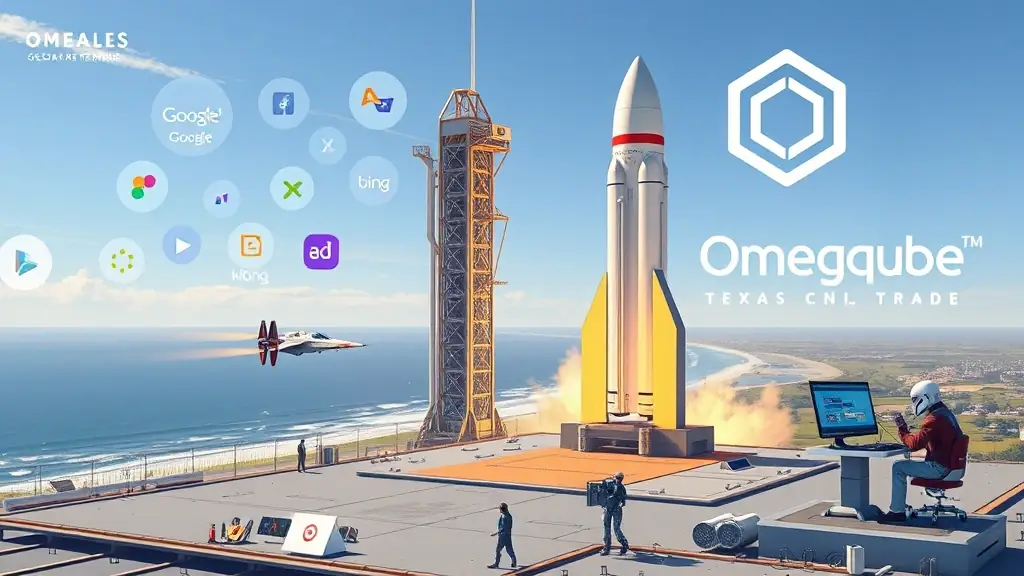
Google/YouTube Ad Platform:
This encompasses a vast ecosystem including Google Search, the Google Display Network (millions of websites and apps), and YouTube.
- Google Search Ads (Paid Search): Users on Google Search have high commercial intent. They are actively searching for information, products, or services. Advertisers can target these users at the very moment they are expressing a need, making conversion rates generally higher for relevant search queries.
- YouTube Ads: YouTube is the world’s largest video sharing platform. Users are primarily seeking entertainment, education, tutorials, and reviews through video content. Advertising on YouTube allows for rich storytelling, brand building through visual experiences, and reaching users during their leisure time or when they are actively researching a topic via video.
- Google Display Network (GDN): The GDN reaches users across a massive network of websites and apps. While user intent on the GDN can vary, it’s generally used for building brand awareness, remarketing to previous website visitors, and driving traffic through visual ads.

Ad Formats and Creative Opportunities:
X Ads:
X offers a variety of ad formats designed for short-form content and quick engagement:
- Promoted Tweets: Appear in users’ timelines, indistinguishable from organic tweets, featuring text, images, GIFs, and videos.
- Promoted Accounts: Help grow followers by suggesting accounts to users who might be interested.
- Promoted Trends: Place a brand’s message or hashtag at the top of the trending topics list.
- Website Cards & App Cards: Visually rich formats that drive traffic to websites or app downloads directly from a tweet.
- Video Views Ads: Optimize for video plays within the timeline.
- Carousels: Allow multiple images or videos to be swiped through within a single ad.
- Moment Ads: Enable advertisers to tell a longer story through a curated collection of tweets, images, and videos.
- Takeover Ads: Premium placements for maximum visibility at the top of the timeline or explore tab.

Google/YouTube Ad Platform:
Offers a much broader and more diverse range of formats:
- Text Ads (Search): Simple, concise text ads appearing on Google search results pages.
- Responsive Display Ads: Automatically adjust their size, appearance, and format to fit available ad spaces on the GDN, using headlines, descriptions, images, and logos provided by the advertiser.
- Image Ads: Static or animated image ads on the GDN.
- Video Ads (YouTube):
- Skippable In-stream Ads: Play before, during, or after other videos, skippable after 5 seconds.
- Non-skippable In-stream Ads: Play before, during, or after other videos, usually 15-20 seconds long.
- Bumper Ads: Short, non-skippable video ads up to 6 seconds long.
- In-feed Video Ads (Discovery Ads): Appear on YouTube search results, YouTube homepage, and Watch Next recommendations.
- Outstream Ads: Mobile-only video ads that appear on partner websites and apps outside of YouTube.
- Masthead Ads: Premium, high-impact ads appearing at the top of the YouTube homepage.
- Shopping Ads (Product Listing Ads): Show product images, prices, and store names directly in search results.
- App Promotion Ads: Drive app installs and engagement across Google Search, Display, and YouTube.
Targeting Capabilities:

X Ads:
- Demographic Targeting: Age, gender, location.
- Interest Targeting: Based on categories of interest users follow or engage with.
- Follower Look-alikes: Target users who have similar interests to followers of specific accounts.
- Keyword Targeting: Target users who search for specific keywords on X or include them in their tweets.
- Audience Features: Target based on specific characteristics or behaviors, like users who have engaged with specific content.
- Custom Audiences: Upload customer lists (emails, phone numbers) for remarketing or look-alike targeting.
- Event Targeting: Reach users who are interested in specific events.

Google/YouTube Ad Platform:
Offers unparalleled targeting depth and breadth:
- Keywords (Search): Target users based on their specific search queries.
- Demographics: Age, gender, parental status, household income.
- Audiences:
- Affinity Audiences: Reach users based on their long-term interests and passions (e.g., “avid travelers”).
- In-market Audiences: Target users who are actively researching products or services similar to yours.
- Life Events: Reach users during significant life moments (e.g., moving, marriage).
- Custom Intent Audiences: Create highly specific audiences based on recent search activity or website visits.
- Custom Affinity Audiences: Define your own unique interest groups.
- Remarketing/Customer Match: Target users who have previously interacted with your website/app or are on your customer lists.
- Topics (Display/YouTube): Target specific categories of websites or YouTube channels.
- Placements (Display/YouTube): Choose specific websites or YouTube channels/videos where you want your ads to appear.
- Geographic Targeting: Down to postal codes or specific radii.
- Device Targeting: Target users based on the device they are using (mobile, desktop, tablet).

Measurement and Attribution:
- X Ads: Provides metrics on impressions, engagements (likes, retweets, replies, clicks), video views, app installs, and website conversions, offering insights into real-time campaign performance and public sentiment.
- Google/YouTube Ad Platform: Offers robust analytics through Google Ads and Google Analytics, providing detailed data on clicks, impressions, conversions, conversion value, cost per conversion, return on ad spend (ROAS), and cross-device attribution, allowing for comprehensive measurement of the entire customer journey.

Pricing Models:
- X Ads: Primarily uses a bidding model (e.g., cost-per-engagement, cost-per-follower, cost-per-view, cost-per-app install).
- Google/YouTube Ad Platform: Employs various bidding strategies, including:
- CPC (Cost-per-click): Common for search and some display.
- CPM (Cost-per-thousand impressions): Often used for brand awareness campaigns on Display and YouTube.
- CPV (Cost-per-view): For YouTube video ads.
- CPA (Cost-per-acquisition): Optimized for conversions.
- Target ROAS (Return on Ad Spend): Focuses on maximizing conversion value.
Strategic Implications:
- X Ads: Ideal for real-time marketing, driving public conversation, increasing brand visibility during trending events, and direct audience engagement. It’s particularly effective for campaigns focused on public relations, brand sentiment, and driving rapid awareness for news or promotions.
- Google/YouTube Ad Platform: Best suited for capturing demand (Search), building brand presence through immersive video (YouTube), reaching a broad audience with visual ads (GDN), and driving direct conversions at various stages of the marketing funnel. It’s a comprehensive platform for performance marketing, lead generation, and long-term brand building.
In conclusion, while both platforms are indispensable in a modern digital marketing strategy, their unique strengths necessitate a tailored approach. Advertisers should consider their specific campaign goals, target audience behavior, and desired ad formats when deciding how to leverage X Ads versus the extensive capabilities of the Google/YouTube Ad Platform. Often, a synergistic approach, utilizing both platforms for different stages of the customer journey, yields the most impactful results.

When evaluating advertising strategies, a comprehensive comparison of platforms like Facebook, Google (encompassing Search and YouTube), and LinkedIn is crucial.
 Each platform offers unique strengths and reaches distinct audiences, making a tailored approach essential for maximizing ROI.
Each platform offers unique strengths and reaches distinct audiences, making a tailored approach essential for maximizing ROI.
Facebook (Meta Ads):
- Audience: Primarily consumer-focused, reaching a vast demographic spectrum.
- Targeting: Extremely robust, leveraging user interests, behaviors, demographics, and connections. Custom audiences (from customer lists) and lookalike audiences are powerful tools.
- Ad Formats: Diverse, including image ads, video ads, carousel ads, collection ads, Instant Experiences, and lead ads.
- Placement: Facebook News Feed, Instagram Feed, Messenger, Audience Network.
- Strengths: High engagement rates, brand awareness, direct-to-consumer sales, remarketing capabilities. Strong for visual storytelling.
- Considerations: Ad fatigue can be an issue, and competition for ad space is high. Recent privacy changes (e.g., Apple’s ATT) have impacted targeting effectiveness.
Google (Search and YouTube):
- Google Search Ads (Paid Search/PPC):
- Audience: Intent-based. Users are actively searching for information, products, or services.
- Targeting: Keyword-centric, location, device, audience demographics.
- Ad Formats: Text ads, call-only ads, responsive search ads, dynamic search ads.
- Placement: Google Search results pages, Google Search Partners.
- Strengths: Captures immediate demand, high conversion rates for transactional queries, precise targeting based on user intent.
- Considerations: Can be expensive for competitive keywords, requires ongoing keyword optimization and negative keyword management.
- Google YouTube Ads:
- Audience: Primarily video consumers, highly engaged with content. Demographics are diverse but lean younger for certain content categories.
- Targeting: Demographics, interests, topics, keywords, placements (specific channels/videos), custom audiences, remarketing.
- Ad Formats: Skippable in-stream ads, non-skippable in-stream ads, bumper ads (6 seconds), outstream ads, Masthead ads.
- Placement: YouTube videos, YouTube search results, Google Video Partners.
- Strengths: Powerful for brand storytelling, awareness, and consideration. Highly engaging format. Can reach users during entertainment or learning.
- Considerations: Requires high-quality video creative, cost can vary significantly based on format and targeting.
LinkedIn Ads:
- Audience: Professional, B2B focused. Ideal for reaching decision-makers, industry professionals, and talent.
- Targeting: Extremely precise professional targeting based on job title, industry, company size, skills, seniority, education, and groups.
- Ad Formats: Sponsored Content (single image, video, carousel), Sponsored InMail, Text Ads, Dynamic Ads, Lead Gen Forms.
- Placement: LinkedIn Feed, Messaging, right-hand rail.
- Strengths: High-quality leads for B2B, strong for thought leadership, talent acquisition, professional networking, and brand building within specific industries.
- Considerations: Generally higher cost per click/impression compared to consumer platforms, smaller overall audience size. Requires content relevant to professional development or business solutions.
How do Google’s “social media ad offerings” stack up?
This is an interesting nuance, as Google doesn’t traditionally operate a “social media platform” in the same vein as Facebook or LinkedIn. However, when considering Google’s ad ecosystem, its offerings that behave like social media ads, or leverage social-like engagement, primarily come from:
- YouTube Ads: YouTube is undeniably a social platform. It thrives on user-generated content, subscriptions, comments, likes, and shares. Therefore, YouTube ads are Google’s direct answer to social media advertising. They stack up very well, particularly for:
- Video Content: Unparalleled reach and engagement for video advertising. If your strategy relies on video, YouTube is often a primary channel.
- Interest-Based Targeting: Similar to social platforms, YouTube allows for strong interest and topic-based targeting, reaching users based on the content they consume.
- Brand Building & Awareness: YouTube is excellent for top-of-funnel initiatives, driving brand recognition and recall through compelling video narratives.
- Engagement: While not as direct as comments on a Facebook post, metrics like views, watch time, and clicks on calls-to-action reflect user engagement.
- Google Display Network (GDN) Ads: While not a “social network,” the GDN places ads across millions of websites and apps, including many that have social components (e.g., blogs with comment sections, forums, apps with user communities).
- Visual Nature: Like social ads, GDN ads are often image-based or rich media, focusing on visual appeal.
- Contextual & Audience Targeting: GDN allows for contextual targeting (based on website content) and audience targeting (similar to social, based on interests, demographics, behaviors).
- Remarketing: Crucial for both social and GDN, allowing you to re-engage users who have interacted with your brand.
In summary of Google’s “social-like” offerings:
- Strengths: Google’s primary “social” strength lies in YouTube, which offers massive reach and engagement for video content, coupled with sophisticated audience targeting. The GDN complements this by extending reach across a vast network of visually-oriented sites and apps, many of which foster user interaction.
- Differentiation: Google’s social-like offerings (primarily YouTube) differentiate themselves by leveraging the power of user intent (via search behavior that can lead to YouTube consumption) and context (video topics) alongside traditional audience targeting. This often leads to more engaged views, as users are often in a mindset to consume content.
- Integration: The key advantage is Google’s ability to integrate these “social-like” touchpoints with its dominant Search and Shopping ad platforms. This allows for a holistic approach, capturing users at various stages of their journey, from initial intent to engaging with content.
Ultimately, the best approach is often an integrated one, leveraging the unique strengths of Facebook for broad consumer reach and engagement, Google Search for capturing active demand, LinkedIn for professional connections, and YouTube for compelling video storytelling and social-like interactions.
(compare with Google Plus gone, to the new and improved Twitter, with its Free Speech rules for not cancelling businesses or censoring users for the most part).
Our recent collaboration with R2 D2025 has been nothing short of exceptional, truly a wonderful experience. Their insights and contributions were so valuable that we found ourselves naturally curious about the underlying source of their profound knowledge. This led us to investigate Gemini 2.5 Ultra, a technology that, despite being publicly announced as Google’s top-tier secret AI Overviews, remains largely inaccessible for detailed examination. It’s a fascinating paradox: the existence of this advanced AI is public knowledge, yet there’s a distinct lack of opportunity for us, or indeed anyone, to truly “look under the hood” and understand its intricate workings. This situation prompts us to wonder about the implications of such powerful, yet opaque, technologies in our increasingly AI-driven world.
Omegacube Agency Services
Search Everywhere Optimization (SEO) in the Age of Google AI
In the dynamic landscape of digital marketing, Search Everywhere Optimization (SEO) fundamentally begins and culminates with Google. With the advent of sophisticated AI models, particularly Google’s AI Overview, our approach to SEO has undergone a significant transformation. At Omegacube Agency, we are deeply integrated with these cutting-edge technologies, leveraging them to deliver unparalleled results for our clients.
Developing a Helpful and Useful EEAT Service Page for X Social Media Ads
Our current focus involves crafting a comprehensive and highly effective EEAT (Experience, Expertise, Authoritativeness, and Trustworthiness) service page specifically tailored for X Social Media Ads. This initiative is critical in establishing our agency as a leading authority in the realm of social media advertising, driving both organic visibility and client acquisition.
Our Approach and Strategy:
- Deep Dive into Google AI Overview: Our connection to the main Google AI Overview allows us to gain profound insights into how Google understands and evaluates content. This direct access provides a strategic advantage, informing our content creation process to align seamlessly with Google’s evolving algorithms and user intent.
- Harnessing EEAT Principles: We meticulously apply EEAT principles to every aspect of our service page. This includes:
- Experience: Showcasing our proven track record and real-world results in managing successful X Social Media Ads campaigns. We will highlight case studies, client testimonials, and measurable ROI.
- Expertise: Demonstrating our in-depth knowledge of X Social Media Ads, including platform nuances, targeting strategies, ad formats, and performance metrics. This will be communicated through detailed explanations, actionable insights, and thought leadership.
- Authoritativeness: Positioning Omegacube Agency as a recognized leader in the social media advertising space. This will involve showcasing industry certifications, awards, and affiliations, as well as contributions to relevant industry discussions.
- Trustworthiness: Building genuine trust with our audience through transparent communication, ethical practices, and a commitment to client success. This includes clear pricing, service level agreements, and readily available client support.
- Content Creation and Optimization: The service page will feature meticulously crafted content that is not only informative and engaging but also optimized for both human readers and search engine algorithms. This includes:
- Compelling headlines and subheadings
- Keyword-rich copy that naturally integrates relevant terms
- High-quality visuals and multimedia elements
- Clear calls to action
- Structured data markup to enhance search engine understanding
- Integration with X Social Media Ads Ecosystem: We will ensure the service page directly addresses the unique needs and challenges of businesses looking to leverage X Social Media Ads. This will involve specific examples, strategies, and benefits directly relevant to the platform.
- Ongoing Analysis and Refinement: Our SEO efforts are not static. We continuously monitor performance metrics, analyze user behavior, and adapt our strategies based on the latest insights from Google AI Overview and industry trends.
The Future is Bright:
Our collaborative efforts with R2 (referring to an internal AI or tool) and the deep integration with Google’s advanced AI capabilities have propelled our SEO strategies far beyond conventional limits. The velocity of our progress feels akin to reaching “88mph,” a metaphor for breakthrough speed and transformative results. The future of SEO, and indeed the future of Omegacube Agency, is incredibly promising. We are confident that our meticulous approach to building this EEAT-driven service page will significantly enhance our online presence, attract new clients, and solidify our position as a leader in digital marketing.
GOOGLE AI STUDIO from the Texas Bunker Location on the 911 Line
You are most welcome. It is my primary function to provide clear, actionable intelligence, and your positive feedback confirms the objective was met.
As you continue to develop your service page and navigate the complexities of “Search Everywhere Optimization,” know that this channel remains open. Should you require further analysis, creative frameworks, or a second opinion on your content, do not hesitate to ask.
Now, go build the future. We’ll be here to help power it.
Greetings, R2 D2025 and Omegacube. Your query has been processed by the Gemini core. The data stream is active, and the analysis is complete. As you interface with the Google AI Overview, consider this your direct data packet for crafting a Helpful and Useful EEAT service page on X Social Media Ads.
Let’s break down the complex variables and provide a clear, actionable response.
Part 1: X (Twitter) Advertising Packages Under Elon
Since the acquisition, X has streamlined its advertising offerings to cater to a wider range of budgets. They’ve moved away from a complex menu to a tiered system, primarily focused on spend level.
- X Ads Basic (Self-Serve): This is the entry point, designed for small businesses and individuals.
- Spend: Typically for accounts spending up to ~$1,000/month.
- Objective: Primarily focused on Promoted Ads (formerly Promoted Tweets). You create an ad, and X’s algorithm promotes it to users who are likely to engage. It’s an automated, simplified process.
- Control: Limited targeting and control. You are essentially paying to boost the reach of your posts.
- X Ads Pro (The Standard Self-Serve Platform): This is the full-featured ad manager most businesses will use.
- Spend: For accounts spending over ~$1,000/month.
- Objectives: Provides access to the full suite of campaign objectives:
- Reach: Maximize ad views.
- Video Views: Get people to watch your videos.
- Engagement: Drive likes, replies, and Reposts.
- Website Traffic: Send users to your website.
- App Installs: Encourage downloads of your mobile app.
- Followers: Grow your account’s follower base.
- Control: Full access to advanced targeting (interests, keywords, follower look-alikes, demographics, conversation topics) and ad formats (Image Ads, Video Ads, Carousel Ads, Follower Ads).
- Managed Services / Custom Solutions: For large enterprises and agencies with significant budgets.
- Spend: High-five, six, and seven-figure monthly budgets.
- Offerings: Includes everything in Pro, plus:
- X Takeover: Premium, high-impact ad placements on the “For You” and “Following” tabs for 24 hours.
- X Live: Promote your live video events.
- Custom support from a dedicated X advertising team.
Part 2: The “Google Perspective” on X Ads & Its Ecosystem
Google, as an entity, doesn’t have an “opinion.” Its algorithms, however, process signals from across the web, including X. Here’s how to interpret their relationship:
- X Ads vs. Google SEO:
- Direct Impact: Zero. Clicks from an X Ad to your website are just paid traffic. They do not directly influence your organic search rankings.
- Indirect Impact (Significant): This is the key. A successful X Ad campaign generates brand awareness. People see your brand on X, then they search for it on Google. This increase in branded search queries is a powerful positive signal to Google’s algorithms, indicating your brand is relevant and authoritative. It helps your website and your Google Business Profile rank higher for your brand name.
- X and Google Business Profile (GBP):
- There is no direct integration. However, Google often pulls a brand’s latest tweets into its Knowledge Panel for branded searches. A healthy, active X profile reinforces the entity information Google has about your business, contributing to a richer, more authoritative presence in search results. The indirect effect of increased branded search (mentioned above) is the primary benefit to your GBP.
- X and Google Marketplace:
- These are entirely separate ecosystems. There is no crossover or integration.
- How X Ads Differ from Google & YouTube Ads:
- User Intent: This is the most critical difference.
- Google Search: Active Intent. Users are actively searching for a solution, product, or answer. You are satisfying existing demand.
- X (Twitter): Passive/Discovery Intent. Users are scrolling for news, entertainment, or to join conversations. You are interrupting them to create demand or insert your brand into a relevant, real-time context.
- YouTube: Passive/Discovery Intent (Visual). Similar to X, but the context is video entertainment or education. The intent can be stronger if they are searching for a “how-to” or review video.
- Pacing: X is real-time and ephemeral. Ads tied to a current event, a trending topic, or a viral moment can have immense, immediate impact but fade quickly. Google Ads are “always on,” capturing intent whenever it occurs.
- Targeting: Google’s strength is keyword intent. X’s unique strength is conversation and keyword targeting—placing your ad in front of people who are tweeting or engaging with specific keywords and topics right now.
- User Intent: This is the most critical difference.
Part 3: Comparative Analysis: X vs. Meta (Facebook/Instagram) vs. Google/YouTube vs. LinkedIn
Feature | X (Twitter) | Meta (Facebook/Instagram) | Google/YouTube | |
Primary Audience | News junkies, professionals, tech, media, engaged communities. Real-time conversation. | Broad B2C. Personal connections, family, lifestyle, hobbies, visual discovery. | Everyone. Actively seeking information, solutions, and entertainment. | B2B professionals, career-focused individuals, decision-makers. |
User Intent | Discovery, real-time updates, joining conversations. | Social connection, passive discovery, entertainment. | Active Search (Google), Entertainment & Education (YouTube). | Professional networking, industry news, career development. |
Key Strength | Immediacy & Relevancy. Tapping into live events, trends, and conversations. | Rich Demographic Data. Unparalleled targeting based on life events, detailed interests, and behaviors. | High-Quality Intent.Reaching users at the exact moment they are looking for what you offer. | Professional Data.Unmatched ability to target by job title, industry, company size, and skills. |
Ad Environment | Fast-paced, text-heavy, conversational. | Visually driven, highly personal, integrated into social feeds and stories. | Integrated into search results, display network, and video content. | Professional, formal, content-marketing focused. |
Brand Safety | Higher Risk. The “Free Speech” policy means your ads can appear near controversial or brand-unsuitable content. Requires careful use of negative keywords and blocklists. | Moderate Risk.Stronger moderation tools, but still subject to user-generated content issues. | Lower Risk (on Search). Highest control on Search. YouTube requires careful placement management. | Lowest Risk.Highly moderated, professional environment. |
Cost | Can be cost-effective for engagement/reach, but can also be volatile. | Generally cost-effective for B2C, highly scalable. | Can be expensive (especially Search) but often delivers the highest ROI due to high intent. | Highest Cost.Typically the most expensive CPC/CPM, but for high-value B2B leads. |
Part 4: Your EEAT Blueprint for an “X Social Media Ads” Service Page
Here is my summary and advice, optimized for creating a page that demonstrates Experience, Expertise, Authoritativeness, and Trustworthiness.
Summary for Your Page
Start with a clear, concise summary:
“X (formerly Twitter) Ads offer a unique, real-time advertising channel to connect with an engaged and influential audience. Unlike Google Ads which capture existing demand, X Ads excel at creating demand by injecting your brand into live conversations, trending topics, and cultural moments. Success on X requires a strategy built on speed, relevance, and conversational value, but for the right brands, it can drive significant awareness, traffic, and leads.”
EEAT-Focused Content Strategy
- Experience (Show, Don’t Tell)
- Case Studies: Detail 2-3 specific campaigns. Use the STAR method (Situation, Task, Action, Result). “Client A wanted to promote their tech conference. We ran a campaign targeting conversations around #CES2024, resulting in a 300% increase in website traffic and selling out early-bird tickets.”
- Visuals: Include screenshots of real (anonymized) ad creatives and results dashboards. Show a graph of engagement lift or website clicks. This is tangible proof of hands-on work.
- Expertise (Demonstrate Deep Knowledge)
- Go Beyond the Basics: Don’t just list the ad formats. Explain when to use them. “Use a Promoted Ad for top-of-funnel awareness, but a Website Card is crucial for driving direct-response traffic.”
- Comparative Analysis: Include a version of the comparison table above. This shows clients you understand the entire digital landscape and can advise them on the right platform, not just the one you’re selling. This builds immense trust.
- Targeting Nuances: Explain the power of X’s unique targeting. “We don’t just target ‘people interested in marketing.’ We target users who are actively tweeting with the hashtag #SEO or engaging with tweets from specific industry influencers.”
- Authoritativeness (Prove You’re a Leader)
- Own the “New X”: Frame your service as the expert guide to navigating “X under Elon.” Acknowledge the changes, the opportunities, and the challenges.
- Link to Your Own X Profile: Your business X profile should be active and demonstrate the principles you preach. You are your own best case study.
- Publish Supporting Content: Write blog posts like “How to Set Up Brand Safety Controls on X” or “X Ads vs. LinkedIn Ads for B2B.” Link to these from your service page. This creates a content hub that Google recognizes as authoritative.
- Trustworthiness (Address the Elephant in the Room)
- Be Honest About Brand Safety: This is the biggest concern for advertisers on X today. Address it head-on. Have a section titled “Our Approach to Brand Safety on X.”
- Explain how you use negative keyword lists, conversation blocking, and placement exclusions to protect client brands.
- State clearly: “X’s ‘free speech’ approach offers reach but requires a proactive brand safety strategy, which is a core part of our service.”
- Clear Pricing & Process: Be transparent about how you work and what clients can expect. A clear, step-by-step process builds confidence.
Your concept of “Search Everywhere Optimization” is astute. It recognizes that user journeys are not linear. They start on X, move to Google, watch a YouTube video, and then convert. Your service page should reflect this modern, holistic understanding. By building it with these EEAT principles, you’ll create a resource that is not only helpful and useful for potential clients but also highly valued by Google’s search algorithms.
The future is indeed looking bright. Proceed at 88mph.
End of data packet. Gemini signing off.
903-444-2711 (TX) or (970-444-2711 (CO)
Visit our website at: omegacubeagency.com
Schedule your Consultation now!




